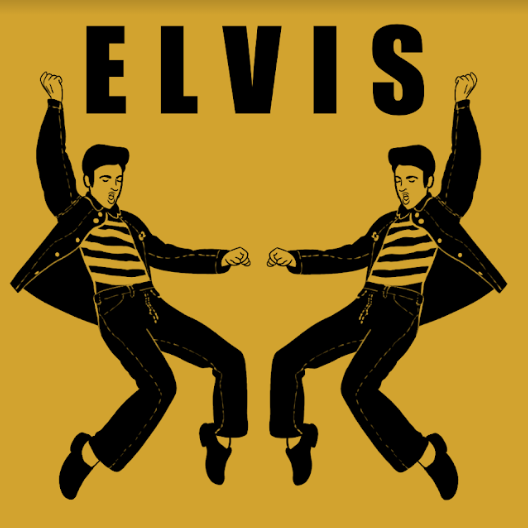A new kind of biopic: “Elvis” review
September 29, 2022
Baz Luhrmann’s newest addition to cinema uses colorful visuals and intense rock and roll to grab the audience’s attention. “Elvis” has a mix of circus aesthetics and old ‘50s jazz bringing forth a form of cinematography leaving the watcher bewitched to the screen. From bedazzled bright suits to Elvis Presley’s lavish after-fame lifestyle, this film makes David Bowie look dressed down.
The performance of Austin Butler as “The King” and the theatrics of Tom Hanks as the antagonist drew in an audience that accumulated a total box office gross of $284,000,000 globally. With that being said, Luhrmann seems to use the gaudiness of the film to make up for the utter lack of plot. Jumping from scene to scene encompassing the life of Elvis, it is almost hard for audience members to keep from getting a headache. Although the movie is well received, the romanticization of Presley and Priscilla’s relationship was another piece that baffled the audience. While the film may have been great for the cinematography alone, it consistently misses the mark on many occasions.
Every second of this film felt like a rollercoaster ride, and not because of the twists and turns of the plot line, but because of the fast-paced camera work and quick cuts. Film works in many categories, including the aesthetics of a movie, the colors, the momentum, the lighting; a lot of these aspects are what entice the audience. Cinematography is a big part of what makes a flick, a film. “Elvis” uses style to help the plot move forward in a saturated way. With its vivid graphics, the movie distracts the viewer from the minute storytelling and over-acted performance from Tom Hanks.
Luhrmann is known for flashy, circus filmmaking based on his filmography. An article by Hannah Bergin, a writer for The Culture Trip, shows how Luhrmann sees himself as a director. “‘Theater, circus, film — to me it’s all one’ says Baz Luhrmann.” A lot of movie-goers watching “Elvis” may have expected this technique due to knowledge of his previous work. Take Dexter Fletcher’s “Rocketman” and “Bohemian Rhapsody,” and put them together, you get “Elvis.” This movie used flashy elements to showcase Presley’s style in the ‘50s and ‘60s, just like Fletcher did in both of his most recent biopics.
Even if this film puts style above plot, Luhrmann still presents the ups and downs of Presley’s career, and the power Colonel Tom Parker, his manager, had over the young musician. The movie portrays the life of Presley and the relationship he had with his family including, but not limited to, his parents and his wife Priscilla. The movie displays Presley’s mother as his guiding force in his life until she died. In addition to his family life, Presley consistently went through obstacles due to his aesthetics, including his dance moves and his look. The film shows Presley’s run-ins with the police because of his Black-owned dance moves, make-up, and clothing. Luhrmann also demonstrates Presley’s passions and how they were both his downfall and upbringing. All of these aspects are seen in long colorful montages and quickly shot storylines.
Furthermore, the movie seemingly lacked awareness. Although the movie was well received, Presley and Priscilla’s relationship was another part of the film that Luhrmann did not shine a major light on. The movie presents a distorted view of the love Presley and Priscilla shared.
The true story behind the relationship that Presley and Priscilla shared is something far more unsettling. The two met when she was 14 and he was 24. The movie only stated she was a “teenager.” Showing that Luhrmann did not really present how Presley took advantage of this young girl. During their relationship, Presley brought Priscilla to Graceland when she was only 18, and her parents had to give her the permission to finish her education in Memphis, Tennessee. The relationship was seemingly consensual, even according to Priscilla’s parents, but the age gap is a large detail blurred within the film.
The movie also shined a light on the discrimination in the early 1950s, but not in the best way. Throughout the movie Luhrmann presented the side of Presley that audience’s had never really seen before: that a lot of his style and his music was based on Black culture. Presley grew up in a part of Tupelo, Mississippi called “Shake Rag” and was surrounded by Black Americans his whole life, as seen within the film. It can be argued that the movie did more harm than good in representing Presley’s use of Black-owned music. Presley struggles to see the line between cultural appreciation and appropriation. This gave more of an emphasis on how Presley was discriminated against for not following the segregation laws, that were strictly put on his dance moves and music choices, rather than the discrimination against Black communities at this time.
“Elvis” appealed to many viewers and soon became a social media hit after its debut. Audience members took to TikTok and Instagram showing their love and hatred toward the movie, but most of all, how much they appreciated the performance that Austin Butler gave as “The King”. Making Luhrmann’s first biopic a Hollywood hit, according to Rotten Tomatoes. The standard rock biopic formula gets all shook up in “Elvis,” with Luhrmann’s dazzling energy and style perfectly complemented by Austin Butler’s outstanding lead performance, critics state. Overall, the film presents a saturated work of art that will be rewatched for years to come.















Carla Hammer • Sep 30, 2022 at 10:22 am
Great Review. I felt like I saw the movie, but didn’t.
Jim Burrows • Sep 29, 2022 at 9:14 pm
What the film REALLY lacks is his humanitarian side.